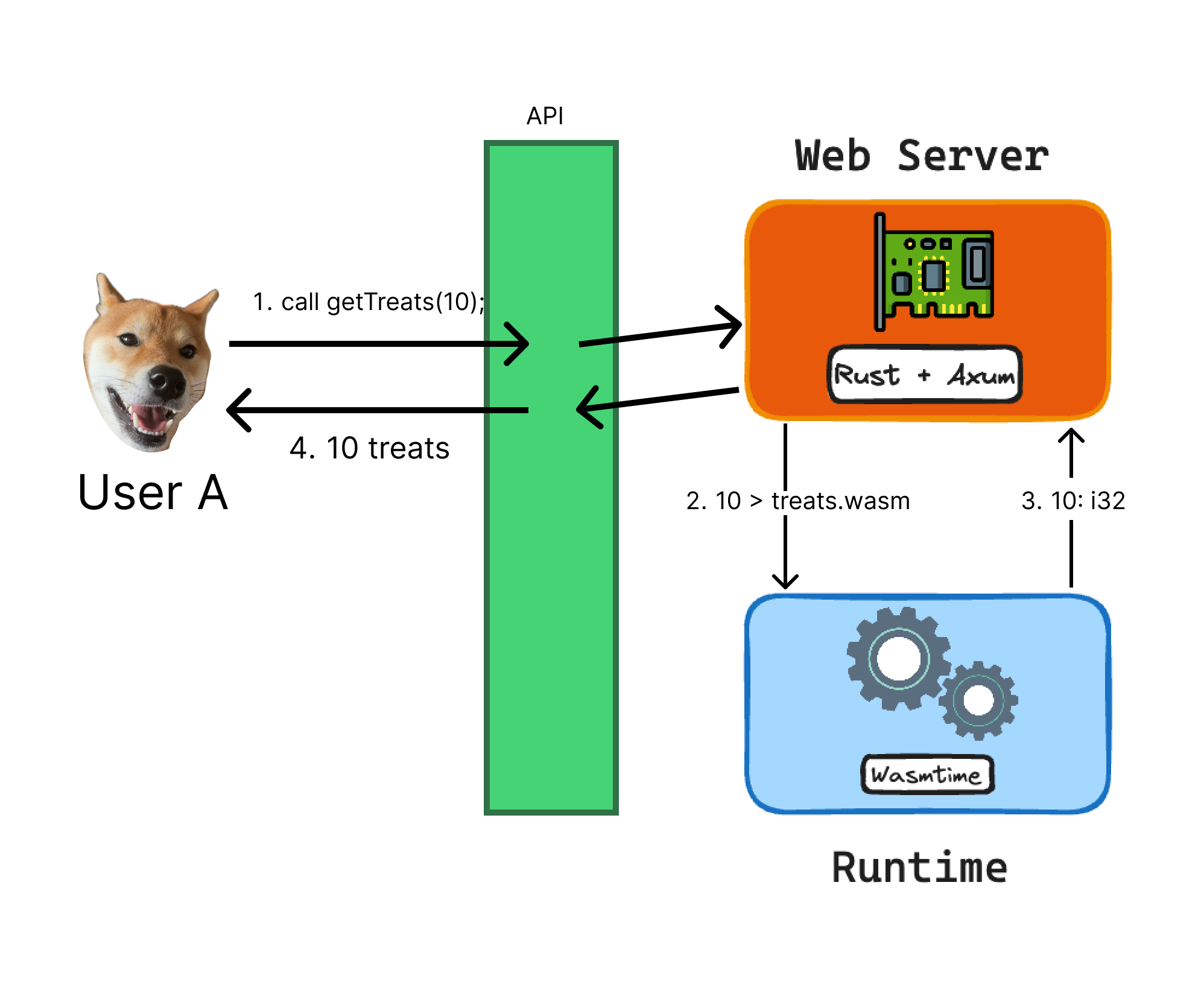

Building Nebula - Chapter 1: Building a Prototype with Rust
October 17, 2023
The beauty of Rust and WebAssembly as the pillars for a new wave of Cloud computing

In the previous post, Building Nebula - Prologue, I laid out the motivations behind Nebula - a FaaS prototype designed to explore the power of WebAssembly. Let's dive into the "how".
A journey beyond JavaScript
The first 4 years of my career was dedicated to mastering the JavaScript ecosystem, where my primary quest was to enhance the user experience of every interface I developed. There's no doubt; JavaScript, with its ubiquity, will likely dominate the web space for many years. However, an encounter with the 2nd edition of The Pragmatic Programmer in 2020 nudged me in a fresh direction.
The book's tip #9, "Invest regularly in your knowledge portfolio", struck a chord. While the author advocated learning a new programming language annually, I ended up choosing depth over breadth, immersing myself in the world of functional programming through Elixir from 2020 to 2022.
But 2023? I decided to start a new side quest and discover what the 🦀 hype was all about. The video Rust makes you feel like a GENIUS by No Boilerplate sealed the deal. I was, as no one says, "crab trapped".
Rust: More than just hype
My years navigating the vast sea of JavaScript have been both rewarding and challenging. The language, while very flexible, can occasionally feel like assembling a jigsaw puzzle with ever-changing pieces.
TypeScript improves this story by leaps and bounds in my day job, but for building Nebula - a prototype designed to swiftly spin up WebAssembly modules - I needed a more efficient and predictable environment.
Why is Rust great for the Nebula journey
Beyond my own personal reasons for wanting to explore Rust, I have compiled some of my reasons for choosing Rust.
- Safety First: Rust's strict compiler and ownership model ensures that any code I write for my prototype is less prone to common bugs, memory leaks and data races. These features will hopefully act as safety rails for developing my prototype.
- Consistency and Reproducibility: For my research I need reliable reproducibility. With its predictable performance, I should be able to gather better data to compare later.
- Streamlined Efficiency: My thesis requires a playground to rapidly iterate and experiment on. Rust's powerful concurrency model and zero-cost abstractions allow me to refine the logic of my prototype without worrying about performance bottlenecks. (Famous last words?)
- A great WebAssembly story: WebAssembly has been a first class citizen in the Rust ecosystem for a considerable time. Furthermore Fermyon - the company that inspired my thesis - places substantial trust in Rust for their platform and SDK.
Building the first iteration
While the focus for my project is on building with Rust and run WebAssembly modules as functions, the road to getting there includes many steps. As of writing this, I already have a simple prototype working, and I'll try to lay out my journey to landing there.
Choosing the WebAssembly Runtime
For running Wasm modules on the platform, it's crucial to have a reliable WebAssembly runtime. There's a plethora of options available: Wasmer, Wasmo, Wasmi, WasmEdge, and Wasmtime to name a few. My research led me to notice that Fermyon had opted for Wasmtime. After a deep dive into Wasmtime, I was impressed by their well-documented Rust crate, allowing me to effortlessly integrate Wasmtime into my Rust project. A pleasant surprise was realizing that the final binary build didn't necessitate having the wasmtime runtime installed on my server.
Designing the Web Server Infrastructure
While the choice of WebAssembly runtime was crucial, the actual mechanism to serve and interact with these modules was equally vital. How do industry giants do it? Amazon with their Lambda, Google with Cloud Functions, or Microsoft with Azure Functions? Without the exact blueprint, I decided on crafting a feasible solution for my experimentation: a web server using Rust and Axum.
The backbone of this server includes a shared crate library. This library acts as the bridge between the web server and the Wasmtime runtime. The envisioned workflow is simple:
In my sketch below, I've drawn up a rough idea of what I want the platform to do in the first iteration.

- User A calls the API (most likely REST API) with GET /api/treats/10 (/api/:module/:input)
- Axum web server receives request, finds the corresponding wasm module "deployed" to the server from the module name, creates a wasmtime instance and provides it with the input.
- The wasm module runs the function based on provided input and returns the output as a valid Wasm type. (In this case i32)
- The web server responds the user with the value returned from the wasm module.
- ????
- Neko is a happy dog, because he got 10 treats at (hopefully) BLAZINGLY fast speeds!
Humble beginnings
My main.rs file looked like this in my first iteration:
#[tokio::main]
use std::net::{IpAddr, SocketAddr};
use axum::{routing::get, Router};
async fn main() {
let app = Router::new()
.route(
"/",
get(|| async { "
<!DOCTYPE html>
<html>
<body>
<div>Hei Simen!<br><br>Hvordan går det? :)</div>
</body>
</html>"
}
),
);
// run it with hyper on localhost:3000
axum::Server::bind(&SocketAddr::new("127.0.0.1", "8080"))
.serve(app.into_make_service())
.await
.unwrap();
}The root page now looks like this:

While maybe not an technically impressive web page, and I'd expect more from my self after 6 years of web development, I still had managed to get a web server in something other than Node and Express up and running!
Smells like victory!
Closing words
If you're interested in seeing how the project was at the end of this blog post, I have tagged it as version v0.1 in my GitHub repo (Link here).
Now you might be wondering: "Wait. What happened with steps 2 through 6? Neko ain't getting no treats with this rudimentary Hello World web server?? What gives??".
Great question! We'll explore that further in the next chapter!
See you in Building Nebula - Chapter 2



